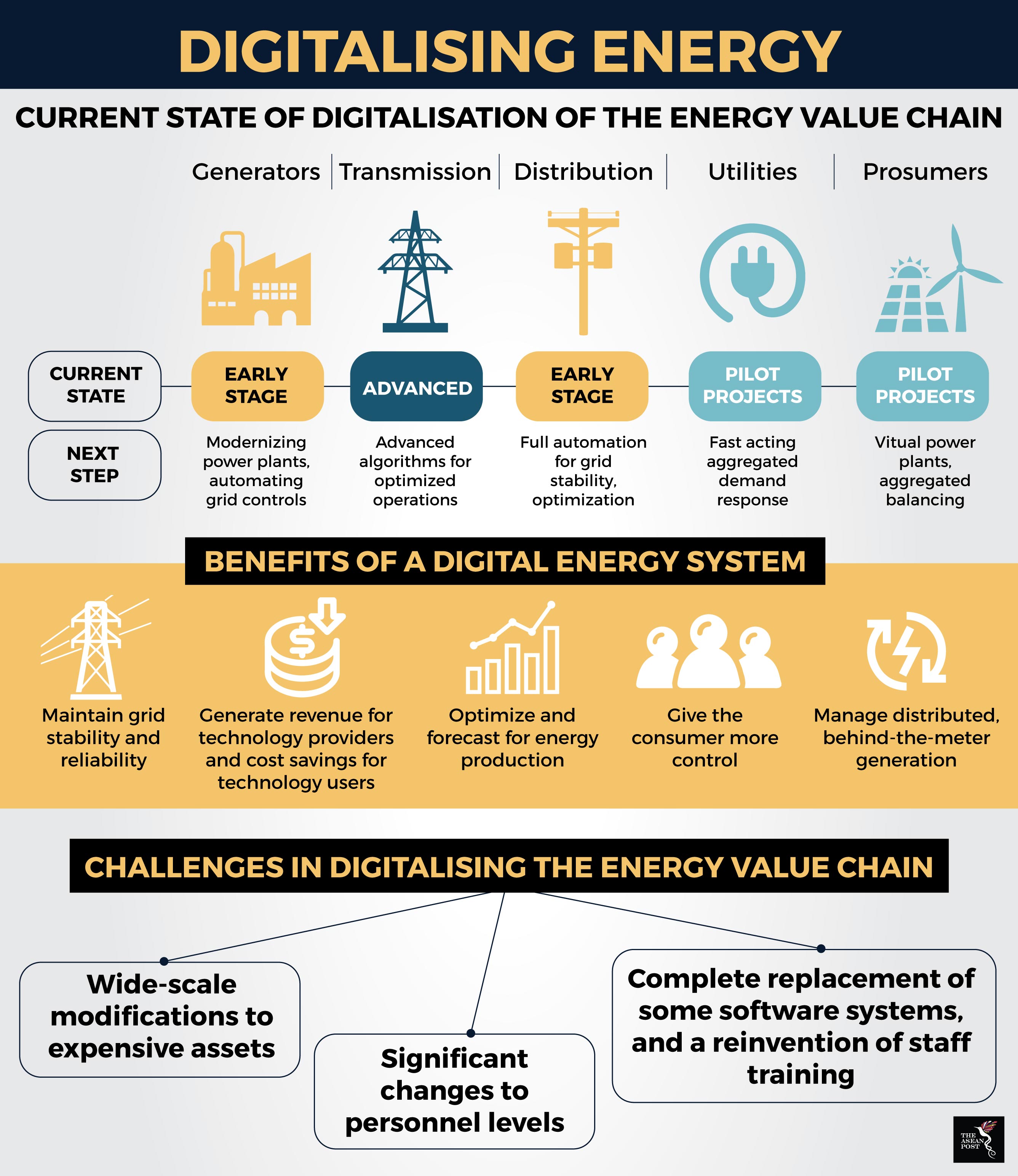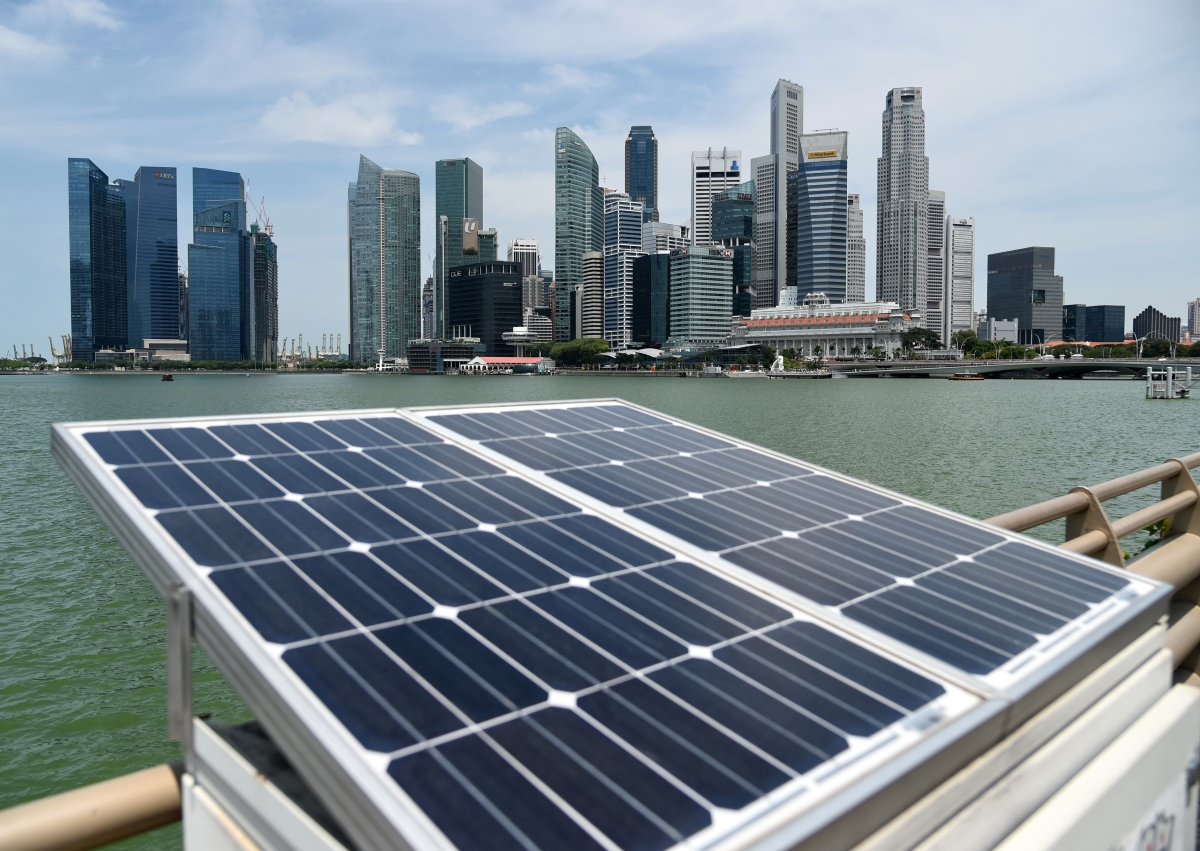In the coming years, digital technologies are set to take energy systems by storm – making them even more interconnected, intelligent, efficient and sustainable. Headway in areas like data analytics, artificial intelligence and blockchain technology have reached the shores of the energy sector. Digitalised energy systems will be key to ensuring energy demands are met in a cost efficient and reliable manner.
According to Bloomberg New Energy Finance, the estimated global annual revenue from the digitalisation of energy could be worth US$54 billion today. In the future, that could increase by almost 19 percent to US$64 billion by 2025. Already, sales growth in the home energy management market reached US$22 billion in 2017 and is predicted to rise up to US$36 billion in 2025.
The Southeast Asian region is one of the fastest growing regions in the world. In line with that, the International Energy Agency (IEA) projects that energy demand in Southeast Asia will grow as much as 60 percent based on today’s figures by 2040, with power generation being one of the main sectors leading this growth. Hence, countries in the region must ensure that they have a sufficient supply of energy. Many of these countries are looking towards renewables although coal and oil will still play a big role in the future.
Benefits of a digitalised energy system
That only paints half the story. The other half is to ensure that energy management and distribution are adept. Herein, lies an incredible opportunity for countries in Southeast Asia to hop on the energy digitalising bandwagon – and for good reason. With the increase in energy demand, governments will have to ensure reliable and uninterrupted access to energy in order to keep the gears of industry moving.
A digitalised energy system will help address many challenges related to power generation. Countries like the Philippines, Myanmar and Cambodia often face power outage issues and skyrocketing utility bills due to inefficient power systems in place.
New technologies like machine learning, blockchain and cloud computing can be used to design a power system to better enhance demand response. A digital energy system will also help with balancing system reserves and tapping into power from self-generators such as owners of rooftop solar systems. There are already cases of smart grid usage which deploys sensors along the transmission grid to identify places that have additional electricity demand and appropriately regulate the electricity load. This in turn helps maintain grid stability and reliability.

Source: Bloomberg New Energy Finance
Besides that, a fully digital energy system can also help in forecasting and optimising energy production. For example, by forecasting wind and solar output, hybrid systems can be better managed in terms of balancing the use of fossil fuel assets to ensure a smooth and uninterrupted supply of electricity. This will also help with the integration of renewable energy into current power generation systems.
Moreover, energy digitalisation will open doors to energy decentralisation. In essence, a decentralised energy infrastructure provides the end user with more control over their energy supply. Using blockchain technology, a peer-to-peer energy market can be created where electricity can be bought and sold at cheaper rates. Even owners of home energy production systems like rooftop solar and home wind turbines can participate in such a market by selling back the excess electricity generated into the local grid.
Challenges at hand
Such a monumental shift towards energy digitalisation does not come without shortfalls. The biggest challenge lies in terms of financing such an endeavour. The creation of smart grids and other digital infrastructure related to power transmission will take widescale modifications on top of the need to purchase expensive assets.
It will also require the retraining of personnel in charge of running such systems. There is also a possibility of some personnel being made redundant due to the automation of processes within a digitalised energy system. The onus here, however, is on utility providers to balance the direct impact on their workforce with the positive gains from grid modernisation.
Nevertheless, much of this can be managed with sound government policy and better efficiency on the part of utility providers. Most utility providers in Southeast Asia are state owned, hence, any effort to update energy systems must be undergirded by strong political will. The fallout from such an endeavour – such as unemployment – must be well mitigated beforehand.
As Southeast Asia marches towards a digital future, there will be added pressure on utilities providers to modernise their systems. These necessary changes will not only benefit utility companies but will also generate additional revenue for technology providers. Consumers will enjoy savings in the long run as well.
